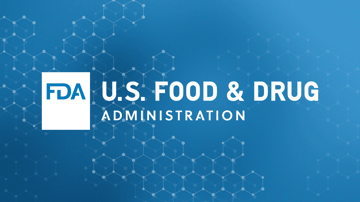The FDA regulation on Requirements for Additional Traceability Records for Certain Foods has left some food companies with questions regarding implementation and feasibility for the industry. The FDA's FSMA 204 Rule applies to products on the Food Traceability List (FTL) and certain foods that contain these items.
Companies must be already taking steps to prepare. How do you approach FSMA 204 compliance? What will the impact be on your company? What roles will your company be responsible for?
Below, we simplify FSMA Section 204 and outline the case for tech-enabled traceability.
The Case for Traceability
Traceability is at the heart of FSMA Section 204. In an increasingly complex global supply chain where the food system and the supply chains are changing at an accelerated pace, the need for true end-to-end traceability is imperative. As consumers continue to demand transparency about their food – including where it comes from, how it was made, and whether it’s safe to consume – the industry will continue evolving to meet consumer needs and governmental regulations.
As the case for traceability and the FSMA 204 rule was crafted, the current “one up, one back” approach to tracking, tracing, and recordkeeping was not enough. There existed a need for consistent data standards throughout the entire supply chain that could enable companies to better connect the dots on how food moves through the marketplace, enabling better interoperability and interconnectivity, improving communication across the supply chain, providing a quicker way to identify sources of contamination, and ultimately helping to minimize the impact of product recalls.
Enhanced Traceability Recordkeeping
The other major component of FSMA 204 is enhanced traceability recordkeeping. FSMA 204 lays the foundation for end-to-end food traceability, extending beyond the current “one up, one back” requirement.
Part of this enhanced recordkeeping regulation includes products on the Food Traceability List, which includes a wide variety of produce, dairy, seafood, and ready-to-eat products that would require traceability records. The FDA developed the FTL through a Risk Ranking Model for Food Tracing, and the list (as of today) includes the following:
- Cheeses
- Fresh-cut fruits and vegetables
- Nut butters
- Produce items
- Ready-to-eat deli salads
- Seafood
- Shell eggs
The important thing to note here is that with the FSMA 204 rule, additional recordkeeping requirements would apply to foods on the FTL and foods that contain these items as ingredients. This means that companies must be mindful of the products they currently have in their operations as well as any new products they might be introducing or using that contain FTL ingredients to ensure they are meeting FSMA compliance for enhanced recordkeeping.
The FDA is asking for partners (growers, on-farm coolers, on-farm packers, produce processors, distributors, grocers, and food service operators) to collect Key Data Elements (KDEs) related to an entity’s Critical Tracking Events (CTEs). For companies, you need to figure out what your role is today and incorporate this recordkeeping into future processes. This means looking at the items that you originate/create, move/store, or use/sell on the FTL and recognizing what data you’re responsible for capturing – and when you need to capture it – as part of the enhanced traceability recordkeeping. By gathering this standardized information from the CTE and recording it. In certain instances, you will also be responsible for sharing that data with the next partner in the supply chain. This data gathering helps identify exact sources of contamination much faster and promotes better visibility throughout the entire food chain.
Emphasis on Standardized Data and Reporting
Records must be maintained as either original paper records, electronic records, or true copies, and they must be legible and stored to prevent deterioration or loss. You need to store this traceability data for 24 months, and if the FDA requests this information, you must provide this data in a sortable spreadsheet within 24 hours.
Through batch/lot product tracking, data is captured at each step of the supply chain, which is crucial for whole-chain traceability. By having standardized data easily accessible and readily available, you are better equipped to share this data with your trading partners and ensure that everyone across the supply chain has the data they need in the event of an investigation or outbreak.
Preparing for Implementation
Here are steps that companies should be taking now to prepare for implementation.
- Conduct an Internal Assessment: What are the products in your operations that will be affected, and what events are you going to be responsible for?
- Identify Data Owners: Who is responsible for each role, and who owns the data in the organization?
- Assess Current Capabilities: What systems do you already have in place, and how are you currently capturing this traceability information?
- Review Current and Future Operations: With the traceability rules and requirements, what are the effects on your operations?
- Prepare for Implementation: If something new needs to be implemented in your organization, what teams and process owners need to be involved? When do you need to have those new initiatives in place to ensure you can meet compliance?
Benefits of Tech-Enabled Traceability
With advanced traceability efforts, the industry hopes to provide greater transparency and visibility into the supply chain to reduce the number of foodborne illnesses/deaths, limit the scope of food product recalls, and enhance the ability to conduct root cause investigations. In the rule, the FDA encourages firms to maintain required traceability information in a single electronic system.
The traceability standards offer a number of takeaways for the industry:
- Digital identity of products,
- Interoperability between trading partners, and
- Transparency/traceability to know what is accurate, authentic, and verified.
However, tech-enabled traceability takes it a step further. Technology can enable:
- Speed to inventory, locate, and surgically remove products from the supply chain,
- Efficiencies to minimize disruption and costs and protect brand reputation, and
- Accuracy enabling a digital supply chain, eliminating time-consuming manual trails, and putting confidence first.
When it comes to maintaining traceability records, communicating with partners, and acting quickly and efficiently in the event of a food product recall, a food traceability system will allow your food business to succeed – and meet compliance – in today’s environment. Moving from antiquated systems to a digital, comprehensive traceability program can seem daunting; however, once implemented, the benefits of tech-enabled traceability in an increasingly digitized supply chain can have incredible impacts on your business.
If you need help understanding how to best approach FSMA 204 compliance and tech-enabled traceability, reach out to our FSMA 204 experts at Trustwell today.
Other posts you might be interested in
View All Posts
Food Industry
16 min read
| December 8, 2023
FSMA 204 Tools for Success: Creating a Food Traceability Plan
Read More
Traceability
6 min read
| January 29, 2021
Gearing up for Traceability 2.0 with FSMA
Read More
Food Industry
3 min read
| May 2, 2022

